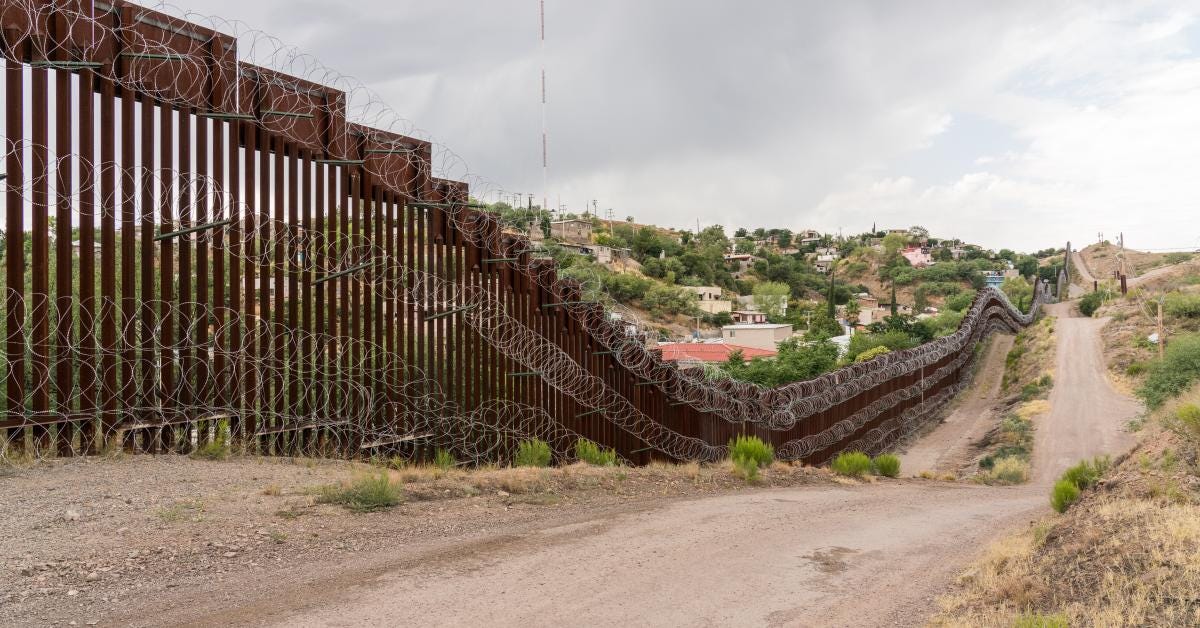Review of “The Border Crossed Us: Rhetorics of Borders, Citizenship, and Latina/o Identity,” by Josue David Cisneros, 2014. Tuscaloosa: University of Alabama Press. Cloth, 229 pages.
… relevant eleven years later!
Talk about a book that is still relevant eleven years later! This classic needs to be read by all Americans interested in the issue of persons crossing US borders without permission!
A professor at the University of Illinois, Cisneros provides us with four main chapters about the rhetorical properties and definitions of the “border” and how it plays a role in the lives of Latina/o spirituality and reality. Drawing on a highly analytical bent, the author lays out many examples of how persons have interfaced with the deeper meanings and pressing challenges of the border as a phenomenon in itself.
The author introduces the “problems” of the border and frames the US-Mexico dividing line historically to give readers a sense of the realities of the conflicts, hopes, irony, grief, confusion, and frustration all associated with that border now. He makes the point that the border has been in the middle of the discussion for a long time now, not just in the last few years and standing there as a symbol suddenly to be discussed, newly discovered. He tells us in his four chapters of the deeper meanings of this idea of a US-Mexico border.
In “Negotiating the Border,” Cisneros shows the open-wound quality of the border and how it has been involved since its beginning with concepts like race, class, belonging, migration, immigration, citizenship, work, and destiny. His interesting takes on what the border has meant are illustrated through his many examples of historical and racial topics, such as the need to import immigrants from Mexico to work in the US, the establishment of the somewhat arbitrary boundaries to begin with, and the imposition of a line into the lives of generations of persons impacted by the boundaries about which they had no vote.
In “Inhabiting the Border,” Cisneros discusses the Alianza Federal de Mercedes [Federal Alliance of Land Grants] and what happened in the 1960s. He uses this movement to show how the protests organized are symbolic of the struggles of the persons impacted by the border without representation. These protests were meant to call attention to the injustice of the border and lobby for the return of Mexican and Spanish land grants to their original heirs. The reader will get the account of what takes place in a small town called Coyote, New Mexico. The planning for the protests is interrupted, and this leads to the alliance members storming the courthouse. The reaction from the establishment in New Mexico is telling and shows the US mainstream devotion to maintaining the border at any cost.
In “Rebordering the Nation,” the author shows the protests in 2006, namely the marches of documented and undocumented immigrants. The numbers are not exact, but estimates place the numbers or protesters in Chicago at one hundred thousand. The estimates place forty thousand protesters in front of the capitol. The author includes information on the “Gran Marcha” that took place in Los Angeles, with an estimated 500,000 protesters marching. Cisneros uses the marches to show not only the fervor, and large number, of protesters, but also the “hybrid” nature of the protests. The reader will get more information on this in the chapter, with the complexity of the purposes of the marches better clarified by Cisneros.
The author in the last chapter, “Beyond Borders?” reveals some meanings of more recent demonstrations and provides information on legislation such as that signed into law by Arizona Governor Jan Brewer. Looking at what has been happening in that state, Cisneros asks what it means to be from Arizona, and what it means to look “illegal.”
In the Conclusion, the author reminds the reader of the important battle between border and citizenship and explains how he has used analysis to explore the competing rhetoric of these two political ideas. The author also makes the point that the discussion is important not just for those living on or near the border but also for those who think about belongingness.
Now in 2025 we have the new president of Mexico, Claudia Sheinbaum, agreeing to acquiesce to US President Donald Trump in his demand that Mexico do something about the flow of persons into the country illegally—and the flow of fentanyl. Or a similar agreement, or story, depending on which perspective you take—or do not take.
These are some interesting days, indeed!
See this link for the latest: https://www.cnn.com/2025/02/03/world/sheinbaum-trump-tariffs-paused/index.html





